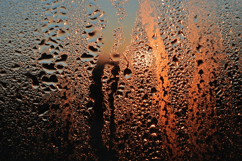HVAC Equipment and Tricks For Condensation Prevention
 HVAC design for museums in cold weather climates often requires an attention to detail that's typically not necessary when humidification is not a factor.
HVAC design for museums in cold weather climates often requires an attention to detail that's typically not necessary when humidification is not a factor.
Because cold, dry, outdoor air must be heated and humidified prior to discharging into the gallery space, and because exterior windows and mullions have the potential to get colder than the space dew point, special care needs to be taken to ensure that condensation does not form on these elements.
Condensation can be avoided using a combination of HVAC design tactics and equipment to provide a heat source to the area of concern. Below are just a few condensation prevention measures that can be employed, but in all cases, special consideration must paid to the design and aesthetics of the museum structure itself.
Baseboard Radiation
The first and most common method is to install a baseboard radiation heating system along the perimeter of the floor beneath the window. This will provide a reliable heat source where warm air will rise and keep the window and mullion temperatures above the space dew point temperature, generally around 50°F - 52°F.
Fin tube radiation is one type. Some pros of using fin tube are that it is reliable and quiet. Warm air is more buoyant than cold air, so the warm air will always rise along the window surface without requiring a forced air system such as a fan. Some of the cons of fin tube radiation are that it can be difficult to implement into the architectural floor layout of a high end gallery space while maintaining the desirable appearance. Additionally, it poses a risk to install any pressurized piping inside a gallery space due to the possibility of a leak which could damage priceless artifacts.
 Modern advancements in HVAC equipment have provided many architecturally appealing options for alternative “trench style” fin tube radiation which can be very low profile and only result in a visible metal grate which is flush with the floor. Electric versions of these trenches are also an option to consider in order to avoid installing any pressurized piping inside the gallery space.
Modern advancements in HVAC equipment have provided many architecturally appealing options for alternative “trench style” fin tube radiation which can be very low profile and only result in a visible metal grate which is flush with the floor. Electric versions of these trenches are also an option to consider in order to avoid installing any pressurized piping inside the gallery space.
CEILING DIFFUSERS
The next method is to provide air distribution above the window from a ceiling mounted diffuser. This is common practice in areas with 8-10 foot ceiling heights.
In most high-end galleries however, where ceilings typically range from 12 to 25 feet tall, the air velocity required to allow warm buoyant air to reach the floor is just not practical. This is due to higher noise levels and higher pressure losses which require more energy to operate.
HEAT TAPE
Another option is to provide local heat within the window mullions in the form of heat tape. This is an electrically charged strip that is applied underneath the window mullion frame to increase its surface temperature above the gallery’s space dew point temperature. This method only addresses the window mullions and in some instances, can be used as the sole source of condensation prevention. This works only if the window glazing has sufficient insulating properties to prevent condensation on the glazing according to the local climate and indoor dew point temperature.
Job specific thermal studies must be used to prove that this is a viable stand-alone solution. If the window glazing does not meet the insulation requirements, then an additional heat source is required to ensure condensation does not form on the glass. If this is the case, then window mullion heat tape may not be necessary due to the fact that an additional heat source is required for the glazing, which can typically satisfy both the window mullions and the glazing.
OR
